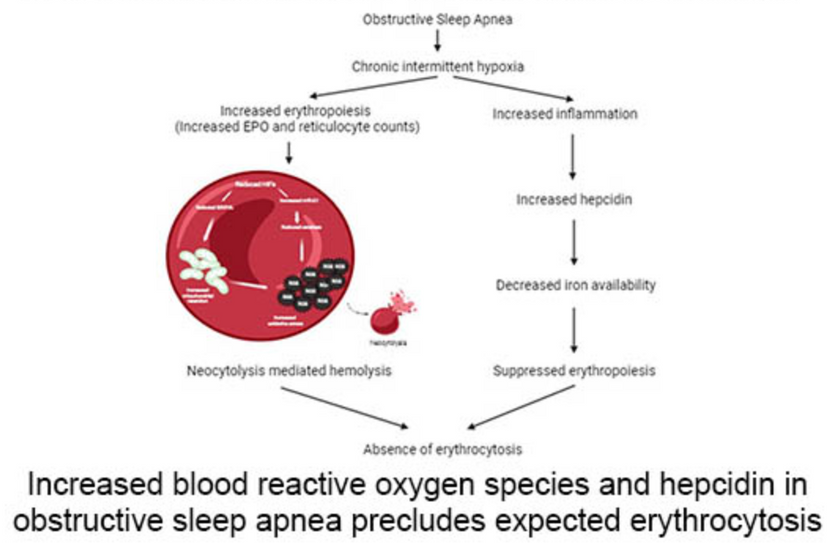
Obstructive sleep apnea (OSA) causes intermittent hypoxia during sleep. Hypoxia predictably initiates an increase in the blood hemoglobin concentration (Hb); yet in our analysis of 527 patients with OSA, >98% did not have an elevated Hb. To understand why patients with OSA do not develop secondary erythrocytosis due to intermittent hypoxia, we first hypothesized that erythrocytosis occurs in these patients, but is masked by a concomitant increase in plasma volume. However, we excluded that explanation by finding that the red cell mass was normal (measured by radionuclide labeling of erythrocytes and carbon monoxide inhalation). We next studied 45 patients with OSA before and after applying continuous positive airway pressure (CPAP). We found accelerated erythropoiesis in these patients (increased erythropoietin and reticulocytosis), but it was offset by neocytolysis (lysis of erythrocytes newly generated in hypoxia upon return to normoxia). Parameters of neocytolysis included increased reactive oxygen species from expanded reticulocytes’ mitochondria. The antioxidant catalase was also downregulated in these cells from hypoxia-stimulated microRNA-21. In addition, inflammation-induced hepcidin limited iron availability for erythropoiesis. After CPAP, some of these intermediaries diminished but Hb did not change. We conclude that in OSA, the absence of significant increase in red cell mass is integral to the pathogenesis, and results from hemolysis via neocytolysis combined with inflammation-mediated suppression of erythropoiesis.

